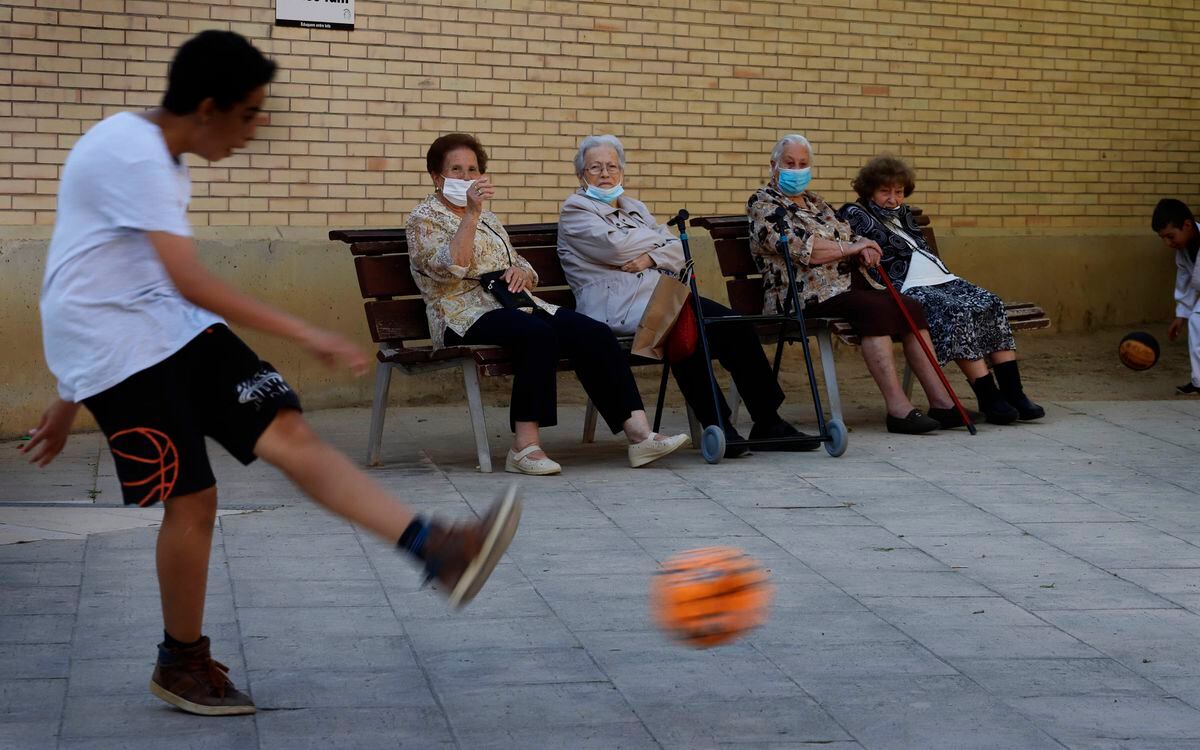When the coronavirus that causes covid was discovered, at the beginning of 2020, it was believed that it was possible to eradicate it, as happened with its primo, SARS. Time disproved this hypothesis: now it is not only assumed that it is a pathogen that has come to stay, but its behavior increasingly resembles that of the rest of the coronaviruses that coexist with humans, which cause colds. Most experts believe that it will be normal to be infected several times throughout life. “If it does not suffer mutations that change its behavior”, they always add.
The key is in the response of the immune system. “What has been seen after vaccines and natural infection is that most people generate a spike in antibodies that lasts a few months, three or four,” explains Marcos López Hoyos, president of the Spanish Society of Immunology. This shields them from a new infection of the same variant during that time: it is not impossible to catch covid again, but it is very unlikely. Then, the antibodies decline, although thanks to the T cells, the body continues to avoid severe disease in the vast majority of cases.
As time passes from the vaccination or the infection (or both), the virus also mutates and evades the defenses (those that prevent contagion), so a person who is exposed to the virus can perfectly be infected several times, as it happens with colds. That does not mean that the virus is as serious as those that cause colds. At least not yet. The sixth wave caused more than 12,000 deaths in Spain, which resembles a rather virulent flu season.
The cases that are now occurring in Spain are of the omicron variant, but different from those that entered the country at the end of last year. The BA.2 sublineage is clearly in the majority; sporadically, others are also found, such as BA.1, BA.3 and, more rarely, BA.4 and BA.5, According to reports from the Ministry of Health.
The problem with exhaustive monitoring of these mutations is that diagnostic tests have no longer been indicated for mild cases in healthy people under 60 years of age for almost two months. Therefore, much less sequencing is done and it is very difficult to document reinfections. But they do occur.
It is even possible that a person who was infected with omicron in the sixth wave is now infected with one of these sub-lineages. “It’s still a bit early, but it can happen, because the variants change and escape acquired immunity, whether natural or from the vaccine,” says López Hoyos. “We are seeing a very good cellular response, so there is no special gravity. It is true that people are dying, but in most cases, due to decompensation from previous illnesses”, he adds.
What could be considered the seventh wave of the coronavirus in Spain is stalled. Friday has marked an incidence in people over 60 years of age, the only ones among whom the disease is measured, 848.6 per 100,000 inhabitants, practically the same as a week ago. And, despite the fact that almost all protection measures against the virus have disappeared, occupancy in ICUs has not increased: in fact, there are fewer people admitted than before Easter, the moment when cases began to grow again . This reinforces the theory that the deepest defenses continue to protect the majority.
There is, however, no good indicator of deaths in real time. It is a statistic that accumulates many delays and can only be measured reliably after a few weeks. What you see when you look back is that dozens of people continue to die in Spain every day from covid. How is this possible if ICUs practically do not increase? Very frail people, generally very old people, are not usually admitted to these units, since it would often mean a therapeutic cruelty with very little chance of success. People with these characteristics, with an immune system that is also very weak, are succumbing to the virus.
For some elderly, who have been very protected during the first waves, this is often their first infection. But it is also not uncommon for them to get sick again after having overcome it in one of its first variants.
Waiting for new mutations
What will happen in the future will depend on the mutations that the pathogen undergoes, according to José Jiménez, who researches coronaviruses and other emerging viruses at the Department of Infectious Diseases at King’s College London. “We are seeing that the number of reinfections with the omicron variant is much higher than with the previous ones. On the other hand, it must also be taken into account that reinfection with other human coronaviruses that cause the common cold is frequent and that the protection achieved with vaccines or a previous infection decreases over time.
Javier Arranz, spokesperson for Infectious Diseases of the Spanish Society of Family and Community Medicine (semFYC) is of the same opinion and believes that the evolution of this new disease will most likely follow these same paths: “We have to assume that there are going to be enough mutations so that immunity can be bypassed and you can get infected again, although normally it is mild.
To exemplify his vision of what may be to come, Vicente Martín, from the Spanish Society of Primary Care Physicians (Semergen), paraphrases a saying that is used for motorcyclists, of whom it is said that there are two groups: those who have fallen and those who will fall. “With the coronavirus there are those who have passed it, those who will pass it and those who will do it several times throughout their lives, something that will be very frequent.”
–


